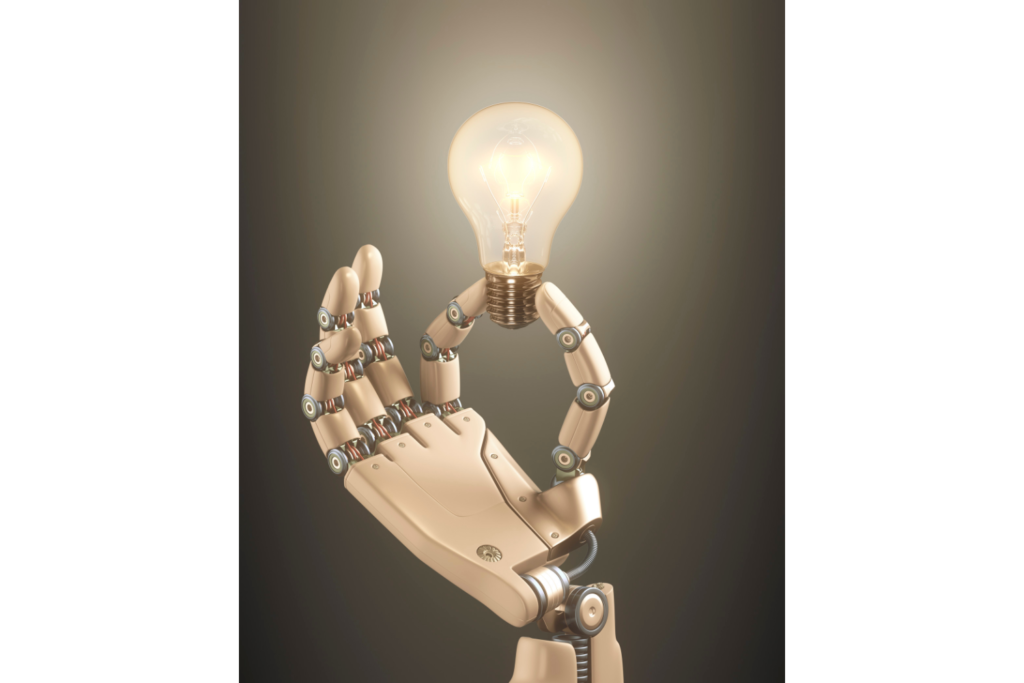Five Marketing Predictions for 2025
Jan 2, 2025By this point, most marketers have become accustomed to the never ending whirlwind of change and evolution in the digital…

Extramile Digital presents – AI Unleashed, our new ongoing blog series discussing all things AI technology.
Fast becoming the hottest topic since the Will Smith slap, artificial intelligence is making waves due to its ever growing capabilities.
Join us as we explore the past, present and future of AI and figure out how long it will take to save for a ticket and escape to Mars.
Just kidding (for now).
Throughout the series we will be taking a deeper dive into the applications and implications of AI, with a particular emphasis on marketing. Obviously.
For this, the first instalment of the series, we will take a look back at the birth of AI as we know it.

Sure, we’ve all heard of AI by now (If not then…wow), but what exactly defines artificial intelligence?
‘AI’ is something of a broad term, there are in fact 4 distinguishable forms of AI Technology –
Reactive AI – AI in its most basic form. Used in things such as your email spam filter and the Deep Blue chess playing computer. This form of AI is limited to producing predictable outputs based on the input it receives and offers no further functions beyond the task it was designed for.
Limited Memory AI – The most commonly used forms of AI. Limited memory AI is able to learn from stored and observational data to perform complex tasks. Used in self-driving cars and industrial robots (the ones used in Amazon warehouses, not the ones that rise up and rule humanity).
Theory of Mind AI – Still in the early stages of development, theory of mind AI aims to understand fluid human emotion to respond to needs that are sensitive to the context of the situation and the mood of the operator. There are however both technical and ethical obstacles to consider with the development of theory of mind AI.
Self-aware AI – This is the form of AI that the Terminator movies were warning us about. Ok, so that may be a slight exaggeration but you see where I’m going with this. Self-aware AI is still very much in its theoretical stage but the premise is to have a form of AI that would have a level of consciousness and real time decision making abilities that are equal to or potentially greater than that of humans… How much are them Mars tickets again Elon?
In short, AI describes systems and algorithms that can interpret, learn and mine external data in a way that attempts to imitate cognitive processes.
Like every good superhero (or villain, the jury is still out), AI has an origin story.
Unfortunately AI’s is perhaps not as action packed as Bruce Wayne becoming Batman or as emotional as Nick Fury assembling the Avengers for the first time but it is certainly an interesting one.
Although most consider it to be a whole new technology, AI actually goes back further than you might imagine, to the years following World War 2.
Alan Turing, one of the earliest pioneers of AI, presented the concepts of AI in his report ‘Intelligent Machinery’ way back in 1948.
By 1950, Alan Turing created what is now considered as the benchmark for evaluating AI systems, the Turing Test.
The Turing test was a practical means of determining whether a machine could exhibit behaviour and intelligence that was indistinguishable from that of a human.
The standards of the Turing test were so comprehensive that it wasn’t until late 2022 with ChapGPT, the AI language model, that the argument could be made for an AI program possibly being capable of passing it, previously nothing had succeeded in passing the test in its undiluted form.
The first major breakthrough in terms of AI programmes that went beyond theory, was the development of the Checkers Program (known as Draughts here in the UK).
First written by Christopher Strachey in 1951, running on a Ferranti Mark I computer, the program was able to play a full game of draughts by summer 1952.
The original Checkers Program was then further expanded upon by an American computer scientist named Arthur Samuel, through years of development, Samuel’s newer version of the checkers program was able to learn from experience and by 1962 was capable of beating experienced former checkers champions.
Although basic by today’s standard, the checkers program and these first efforts in evolutionary computing actually laid the foundation for many of the machine learning techniques still used today.

So as we can see by looking at the various forms of AI and exploring the basis on which it was built, AI has come a long way since the 50s and the most recent iterations are becoming increasingly more sophisticated than the last.
These certainly are exciting times for AI technology, it has changed the way machines perceive and interact with the world and is already serving to lead us through a period of accelerated innovation.
And although AI certainly divides opinion, this is largely down to a fear of the unknown, only time will tell what artificial intelligence will evolve into and for all we know I-Robot could be wrong (let’s hope so). Don’t freak out just yet, for now sit back and enjoy the fruits of this groundbreaking technology.
In the next instalment of AI Unleashed, we will be taking a look at the events and advancements that have led to AI gaining so much attention in recent times.

By this point, most marketers have become accustomed to the never ending whirlwind of change and evolution in the digital…

We’re working in an incredibly exciting time for SEO, driven by advancements in technology and the ability to harness powerful…

On the 10th July, 2025, Instagram posts will become visible in Google search results, creating unique opportunities for savvy businesses…

If you’re managing social media for a business, you’ll know that success comes from strategy — not spontaneity. That’s where…